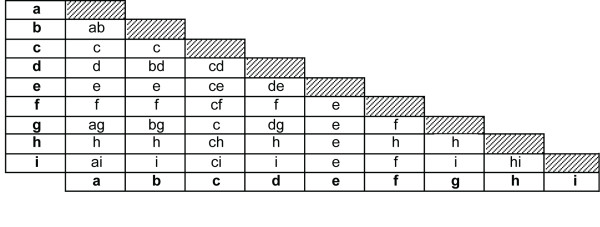Figure 2.
Decision triangle on combined water contact activities. Decision triangle illustrating how combined water contact activities were dealt with. The left column and lowest line indicate single activities (bold). The corresponding cell represents the decision made: (1) one of both activities was considered dominant (only the dominant activity is given in the cell); or (2) both activities were considered relevant (both are given). In the latter situation, for calculations of durations per activity (Table 2 and Figure 3), the combined activity was split proportionally to the average durations of the single activities (upper half of Table 1). All combinations were treated symmetrically, i.e. the decision about 'a + b' and 'b + a' was the same. Combinations of three activities followed the same procedure. For example, 'a + b + c' results in 'c', and 'g + h + i' results in 'hi'. The meaning of the codes for the nine single activities is given in Table 1.

